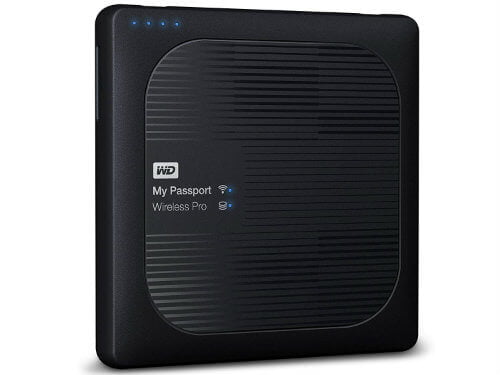

- #EXTERNAL STORAGE IMAC HOW TO#
- #EXTERNAL STORAGE IMAC ARCHIVE#
- #EXTERNAL STORAGE IMAC UPGRADE#
- #EXTERNAL STORAGE IMAC SOFTWARE#
- #EXTERNAL STORAGE IMAC FREE#
It was only once I upgraded to 10.14 Mojave that I found myself waiting seemingly forever for apps to launch and disk-intensive tasks to finish.Īs I grew increasingly frustrated, 10.15 Catalina appeared in late 2019, and I had two critical 32-bit apps I wanted to keep using indefinitely. The Fusion Drive initially suited me well with macOS 10.12 Sierra and seemed to sail through 10.13 High Sierra without causing me grief. I didn’t notice the performance tradeoff most of the time. (See “ iMac 1 TB Fusion Drives Have Smaller SSDs,” 7 August 2017.) However, Apple had just shifted to including substantially smaller SSDs in Fusion Drives, which I believe ultimately became a huge liability.

#EXTERNAL STORAGE IMAC UPGRADE#
At the time, spending $300 for a 512 GB SSD didn’t make sense because I needed more storage, and $700 for the 1 TB SSD upgrade was too dear for my budget. While I had configured it with 32 GB of memory, I opted for a 1 TB Fusion Drive, Apple’s combination of a fast, low-capacity SSD with a slow 5400 rpm, high-capacity hard drive. When I bought the iMac, I unfortunately cheaped out in one important regard. But it took me until two weeks ago to truly unleash its power. When I purchased a quad-core 21.5-inch iMac with Retina display in 2017 and added a secondary 4K display, I felt that I had spent the right amount of money relative to my needs. With a few delightful exceptions that involve printing history and letterpress, I spend most of my day looking at a screen, tapping away on a keyboard, and manipulating a mouse.
#EXTERNAL STORAGE IMAC HOW TO#
#1623: How to turn off YouTube's PiP, use AirPlay to Mac, and securely erase Mac drivesĪn External SSD Gave My iMac a New Lease on Life.#1624: Important OS security updates, rescuing QuickTake 150 photos, AirTag alerts while traveling.
#EXTERNAL STORAGE IMAC FREE#
#1625: Apple's "Far Out" event, the future of FileMaker, free NMUG membership, Quick Note and tags in Notes, Plex suffers data breach.
#EXTERNAL STORAGE IMAC SOFTWARE#
#EXTERNAL STORAGE IMAC ARCHIVE#

Always click the Eject button on the Finder Sidebar next to the drive icon. It’s never a good idea to just unplug the drive without ejecting it first. When finished, eject the drive safely from your Mac. It’s a good idea to place items in similar folders on your Mac – for example, you can move all the Documents files into the Documents folder on the Mac. Next, open the location you wish to copy the file to, then select Edit > Paste to move a file copy to that location. On the USB hard drive, use the mouse to select the folder or file you wish to copy. Still holding down the mouse button, drag the files from the external USB drive to your Mac’s Documents folder. The cursor will change to show the number of files selected. Position the mouse cursor over one of the highlighted files, then click and hold the mouse button. When the external hard drive files are visible in Finder, you have several ways to move them to your Mac’s own built-in hard driveĬlick the mouse button, then drag the selection rectangle around the files you wish to move and release the mouse button. Click to select it and show its contents in Finder. First, connect the drive by USB.Įxternal hard drives can be accessed from several places on a Mac:ĭouble-click the USB hard drive icon to open up a Finder window and browse its contents.Ĭlick Finder > Devices to see a small icon of the external hard drive when plugged in. If you’ve stored your files on an external hard drive, migrating them to a new Mac is simple. If your new Mac is a replacement for an older Mac, or you’re switching from a Windows PC, the odds are that you’ve accumulated a library of documents, photos, videos and files that you’d like to move onto your new Mac.


 0 kommentar(er)
0 kommentar(er)
